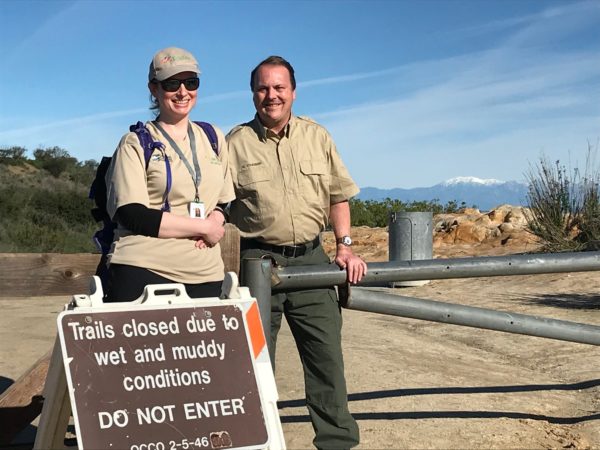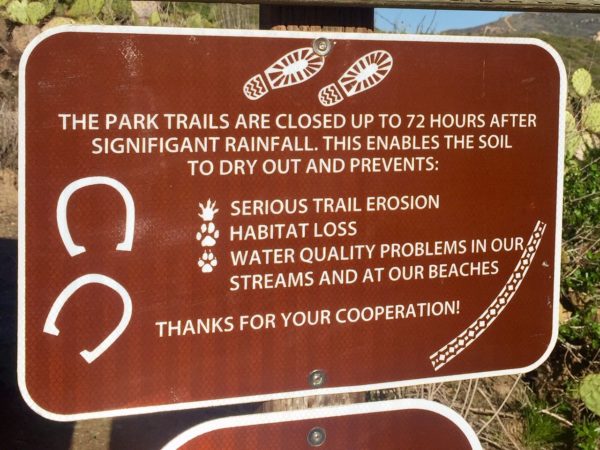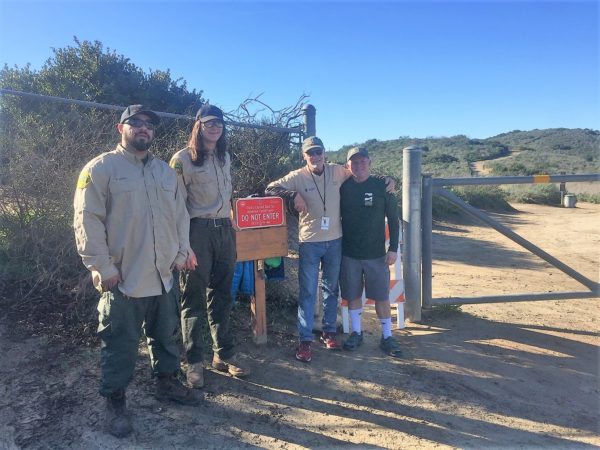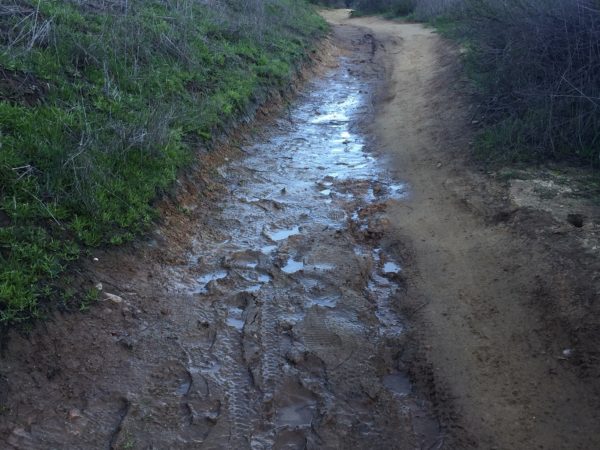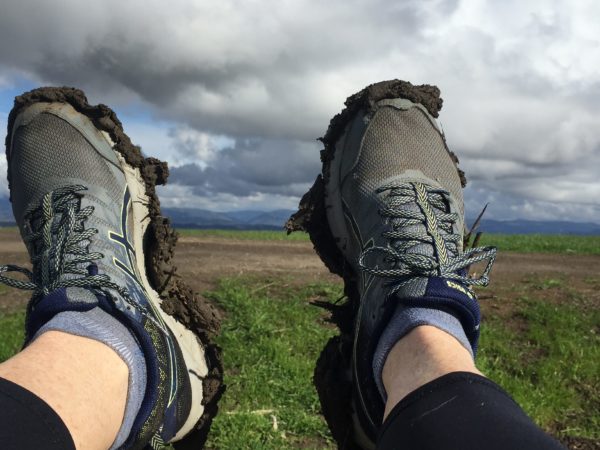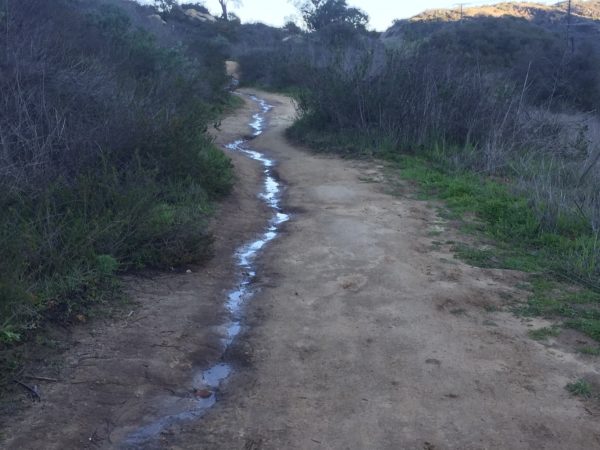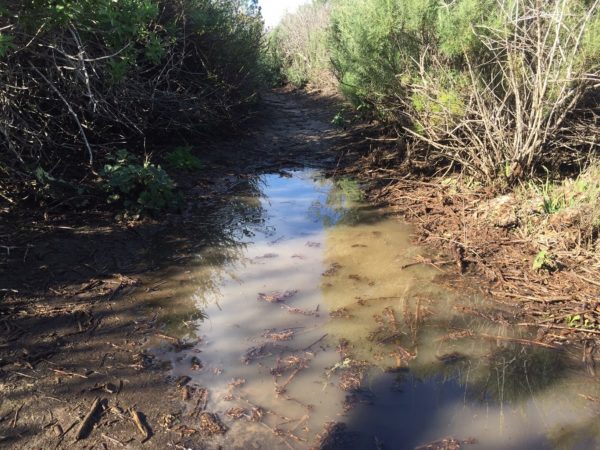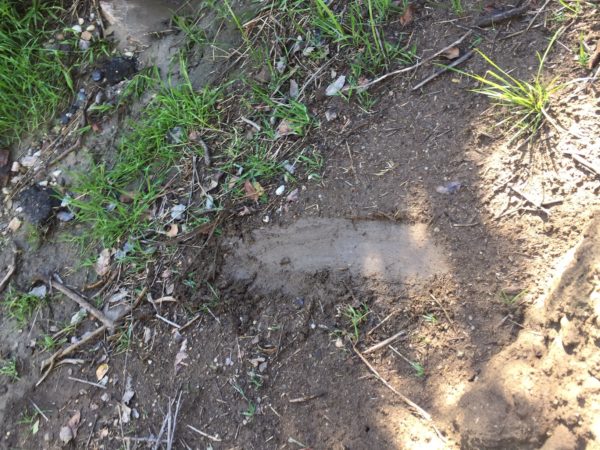After four consecutive days of rain this month, bringing a record 4.5 inches within ten days, OC Parks Rangers made the tough call to close the trails of Aliso and Wood Canyons Wilderness Park and Laguna Coast Wilderness Park. It was a holiday weekend (Martin Luther King, Jr. Day on Monday) and it was expected to be sunny on both Saturday and Sunday.
Why?
That was the big question asked by many hikers, bikers and photographers as they were turned away at the trailheads and gates. Working with the OC Parks rangers, dozens of Laguna Canyon Foundation volunteers staffed several gates and trailheads to let visitors know of the closures.
Under a blue sky, I staffed Top of the World for several hours, turning away hundreds of guests. One disappointed park visitor commented, “I’m from Portland and have never heard of a trail closure because of rain.”
I explained that many parts of the trails are still muddy and slick, even after a few sunny days. The trails can be dangerous for hikers and bikers. In addition, we want to give the habitat time to soak up all the moisture we received.
It was heartwarming when folks asked additional questions and were eager to learn more, perhaps even debate a bit. “We could walk around the mud, right?” “Could we go over there where it seems dry?”
Together a few visitors and I went down that path of conversation: We agreed that there are muddy spots still on the trails, as there were clearly puddles in our view.
These pictures of the trails were taken on January 23rd – five days after the rain.
So, let’s just consider one dense muddy spot in the center of the trail: after one user passes through, they now have mud caked onto their boots or tires. Then another user passes through, more mud leaves that spot, and this continues until there is now a hole where the muddy spot used to be. The hole then fills with water with the next rain or misty morning, creating a deeper muddy spot. The cycle continues, not giving the trail time to heal and dry up.
Over time, the trail becomes unwelcoming, tempting bikers and hikers to go around the hole, creating new paths through fragile vegetation where the seeds of spring’s wildflowers are working their way to the surface to germinate.
Then, all of us park users, collectively and, likely unknowingly, widen the trails, which contributes to further habitat fragmentation, encroaching on the wilderness and threatening native wildlife.
And, after all, we know our wilderness parks are preserved as open space for the native flora and fauna. This is a priority to the rangers and must be a priority to us as well, as we responsibly and respectfully recreate only when the parks are open.
Reports back from our volunteers who staffed the gate closures confirmed that visitors, for the most part, understood and were willing to wait to enjoy the trails on another day. We are grateful for their support.
Hmmm, but back to the Portlander’s comment. She got me thinking. I’ve experienced exactly what she was saying. Up at Humboldt, California, where I went to college and visited with my husband just last April, we were able to hike in the rain on beautiful forested trails juxtaposed to an Arcata neighborhood, much like Laguna Beach and Top of the World. There were no park closures there and it had rained for days.
Why?
One word: habitat. Our local coastal sage scrub habitat is very different from the redwood forests of Humboldt or coniferous forests of Portland. We don’t get rain as often, and when we do, there is less root structure to secure plants, less leaf litter to mitigate mud, and entirely different soil that takes longer to properly absorb moisture. Our growing season is shorter, and we have much lower average precipitation, so our vegetation grows back slowly.
Our local habitat is unique. So protect what we love. Let’s stay off the trails when parks are closed, respect the rangers’ expertise, and pause to enjoy the canyon views from a distance. This preserves the open space not only for the native plants and animals that call it home, but for us who enjoy it so much.
Want to learn more about the animals that live here? Check out this recent Stu News article, featuring photographs taken by LCF volunteer John Foley.

